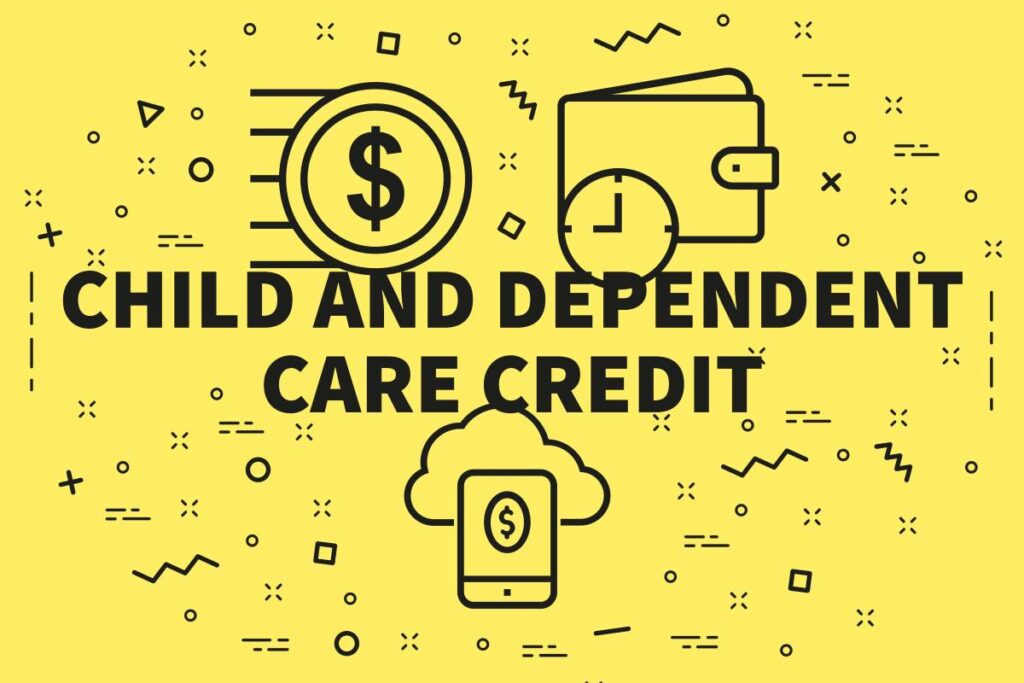Taking care of a child comes with significant financial responsibilities, from covering expenses like feeding, daycare, preschool, and child caregiving. Fortunately, there’s a valuable tax break designed to alleviate some of these financial burdens: The Child and Dependent Care Credit.
In this article, we delve into the essential aspects of the Child and Dependent Care Credit, providing a comprehensive breakdown of how it works, who qualifies, and which expenses are eligible. Whether you’re a working parent or caregiver, our goal is to empower you with the knowledge and insights needed to navigate this credit successfully, enabling you to optimize your tax savings.
Get ready to unlock the financial benefits that await you!

- What Is the Child and Dependent Care Credit?
- What Care Expenses Qualify Towards the CDCC?
- Who Is Eligible?
- How to Claim the Child and Dependent Care Credit
- How Much Are You Entitled To?
- How Long Does CDCC Take To Be Processed?
- What If Your Application Is Denied?
- Your Key to Tax Relief for Childcare Expenses
What Is the Child and Dependent Care Credit?
The child and dependent care credit (CDCC) is a tax benefit provided to parents, guardians, or caregivers to take care of eligible care expenses. Powered by the US Department of the Treasury, the CDCC aims to alleviate the financial burden by reducing the overall tax liability for qualifying individuals.
It’s important to note that the CDCC is a nonrefundable credit. This means that while the credit amount can be used to offset taxes owed, it does not result in a direct tax refund.
What Is the Difference Between CDCC and Child Tax Credit?
The Child and Dependent Care Credit (CDCC) and the Child Tax Credit (CTC) are tax credits designed to assist families financially. However, they differ in implementation.
The CDCC is specifically designed to support working individuals and families with the costs of child or dependent care. It offers credit for a portion of the expenses incurred for qualified care, such as daycare expenses or payments to caregivers. The credit amount is based on the actual expenses paid for childcare. It’s important to note that the CDCC gradually phases out for high-income taxpayers.
In contrast, the Child Tax Credit focuses on providing financial support to families with qualifying children. It provides a credit per child, which helps reduce overall tax liability. Unlike the CDCC, the Child Tax Credit is not directly tied to childcare expenses but serves as a general tax benefit for families with children. The availability and amount of the credit are subject to income limits, and it is not available to high-income taxpayers.
What Care Expenses Qualify Towards the CDCC?
The following care expenses qualify you for the tax credit:
- Nursery school
- Preschool or equivalent care programs for children below kindergarten
- Pre and after-school care
- Dependent care center
- Day camp
- Transportation that a care provider takes with your qualifying dependent
- A care provider who watches after your dependent outside your home
- Application fees or deposits paid to care providers or care services
What Doesn’t Qualify?
The following doesn’t qualify for the tax credit:
- Child support payments
- Summer school
- Tutoring
- Sleepaway camp
- Expenses to attend kindergarten and above grades
- Tutoring
You can also read, “How To Pay Fewer Taxes When You Are Divorced or Separated.”
Who Is Eligible?
To qualify for the child and dependent care credit 2023, you must meet the following requirements:
- You have a child under the age of 13
- You have a spouse who is not physically or mentally able to take care of themselves and has lived with you for more than 6 months
- You claim your physically or mentally challenged spouse on your tax return as a dependent
You can use the eligibility calculator to determine your eligibility for this tax credit.
How to Claim the Child and Dependent Care Credit
All you need to do is file your taxes using the guidelines in Publication 503 (Child and Dependent Care Expenses). As part of the process, you will have to file Form 1040, 1040-SR, or 1040-NR. You will also need to complete Form 2441. You can also call 800-829-1040 for inquiries and support.
Documentation Needed
You will provide the following documents when applying to claim the child and dependent care credit:
- Tax identification number of the caregiver
- Receipt of payments made for caregiving
- Form 2441
How Much Are You Entitled To?
The tax credit amount you are entitled to depends on your income limit. IRS Form 2441 includes a worksheet that can help you determine the exact amount you’re qualified for.
How Long Does CDCC Take To Be Processed?
The processing time for the Child and Dependent Care Credit (CDCC) can vary depending on various factors. This includes the complexity of your tax return, the accuracy of the information provided, and the current workload of the IRS.
Generally, the IRS aims to process electronic tax returns within 21 days. However, it’s important to note that this is an estimated timeframe, and delays can occur.
What If Your Application Is Denied?
You will receive a denial notice if your application to claim the child and dependent care credit 2023 is denied. The notice will explain the denial’s reasons, including whether to appeal the decision.
It’s essential to consult with a tax professional or seek advice from the IRS directly to ensure you follow the correct procedures for addressing a denied CDCC application.
Your Key to Tax Relief for Childcare Expenses
The Child and Dependent Care Credit (CDCC) offers invaluable tax relief for individuals and families facing child or dependent care expenses. To make the most of this tax benefit, it’s crucial to understand the eligibility requirements, gather the necessary documentation, and accurately file your tax return.
Remember, each situation is unique, so if you are in doubt don’t hesitate to seek personalized guidance to ensure you maximize your chances of successfully claiming the CDCC and reduce your financial burden. Take advantage of this key tax relief opportunity and provide the necessary care for your loved ones.”





